 This article will give you information on how to acquire Filipino citizenship. For those foreigners who wants to be a Filipino and planning to live in Philippines, then this information will give you a guide.
This article will give you information on how to acquire Filipino citizenship. For those foreigners who wants to be a Filipino and planning to live in Philippines, then this information will give you a guide.Monday, October 29, 2012
How to Acquire Filipino Citizenship
 This article will give you information on how to acquire Filipino citizenship. For those foreigners who wants to be a Filipino and planning to live in Philippines, then this information will give you a guide.
This article will give you information on how to acquire Filipino citizenship. For those foreigners who wants to be a Filipino and planning to live in Philippines, then this information will give you a guide.How to Cook Delicious Tinolang Manok
Friday, October 26, 2012
What are the interesting and beautiful places in Laguna, Philippines
Laguna, Philippines is a favorite destinations of local and foreign tourists. It is known for its majestic waterfalls, mouth-watering fruits, delicious delicacies, hot springs, and beautiful mountains. It has also a rich and cultural history that makes people of Laguna proud of their province.
Wednesday, October 24, 2012
What are the rights of a Filipino Citizen?
Common Mythical Creatures and Monsters in the Philippines
This article will list down the common mythical creatures and monsters in the Philippines. These creatures create fears to Filipinos both young and old.
You will also read here how we Filipinos describe them, and how they instill fear to us.
Tuesday, October 23, 2012
What are the cultural changes and influenced of Spanish colonization in our country?
Philippine has been a colony of Spain for more than 300 years. During this period of colonization, many things changed in our culture. There was a changed in religion, government, arts, education, and character.
In this article, you will read the cultural changes and influenced of Spanish colonization in our country.
What are the Filipino Traditional Games for Kids?
Filipino traditional games for kids are almost forgotten nowadays. You will see few Filipino children playing tumbang preso, patintero, luksong tinik, etc.
In this article, you will read what are those games that we Filipinos should not forget, including short description of how to play those games.
Monday, October 22, 2012
How Did Ferdinand Magellan Discover the Philippines

When the Spaniards arrived in the Philippines in the 16th century, they discovered a distinct and advanced civilization in our country. According to Philippine historians, it was Ferdinand Magellan who discovered the islands of the Philippines. His discovery resulted to Spanish colonization in our country for 333 years.
Sunday, October 21, 2012
Five Attractions That You Must Visit in Luneta Park
The Beginning of Islam in the Philippines
 Islam is one of the world’s major religion aside from Christianity and Judaism. It originated in Mecca, Saudi Arabia and was founded by Prophet Mohammed. The beginning of Islam in the Philippines started when the Arab traders reached our country. Shariff Karim Ul-Makhdum arrived in Sulu in 1380. He was the descendant of Prophet Muhammed.
Islam is one of the world’s major religion aside from Christianity and Judaism. It originated in Mecca, Saudi Arabia and was founded by Prophet Mohammed. The beginning of Islam in the Philippines started when the Arab traders reached our country. Shariff Karim Ul-Makhdum arrived in Sulu in 1380. He was the descendant of Prophet Muhammed. Friday, October 19, 2012
3 Reasons Why Manila is the Capital of the Philippines
When I was a kid, my mother always tell stories about Manila. She told me that she grew up in this city, and she knows the ins and outs of it. She also mentioned that there are beautiful and interesting places to visit there. Her stories inspired me to visit the capital city of the Philippines someday. Then it came true when our school had a field trip in Manila.
Thursday, October 18, 2012
Lists of Philippine Presidents
 Since our country became an independent nation, Filipinos were given the right to choose and vote a rightful leader who will become the President of the Republic of the Philippines.
Since our country became an independent nation, Filipinos were given the right to choose and vote a rightful leader who will become the President of the Republic of the Philippines. Once a President was elected, he/she will take an oath to do his/her best to protect and serve the interest of every Filipinos. These article will show you the list of Philippine Presidents since the First Philippine Republic was established to the present.
I put it in a chronological order ( from the beginning of the Philippine republic)including a short information of each president.
Wednesday, October 17, 2012
A Brief Summary of Philippine Government Agencies and Its Role in Our Country
One of the important elements in our country is the government. It was made to help, assist, protect, and serve every Filipinos. To carry out their role, they formed government agencies that will assist and provide service to Filipinos.
 Philippine National Police (www.pnp.gov.ph)
Philippine National Police (www.pnp.gov.ph)
PNP was formed to maintain orderliness and peacefulness in our country. It is their responsibility to take care and secure public places against criminals and law offenders.
 Armed Forces of the Philippines (www.afp.mil.ph)
Armed Forces of the Philippines (www.afp.mil.ph)
AFP is in charged of taking care the security of the whole country. They have the Philippine Army, Philippine Navy, and Philippine Air force. They make it sure that every Filipino can move freely from any attacks of other groups against the government.
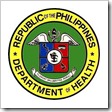 Department of Health ( www.doh.gov.ph)
Department of Health ( www.doh.gov.ph)
The Department of Health provides health services to every Filipinos. They have different programs in family planning, nutrition, sickness prevention, etc. They also established government hospitals like Philippine Heart Center, Lung Center of the Philippines, Kidney Institute, National Orthopedic Hospital, Children's Medical Center, Philippine General Hospital. They also established health centers in every barangays, so they can serve well. They provide free consultation and free medicine to the poor.
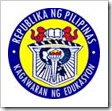 Department of Education (www.deped.gov.ph)
Department of Education (www.deped.gov.ph)
The Department of Education is one of the biggest government agencies in our country. They were given a task by our government to provide free education for all. To enforce this, our government built schools in different places, and free education in elementary and secondary level. They also provide scholarships for deserving college students. They have also programs for out of school youth and adults. These are called non-formal educations.
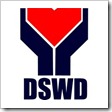 Department of Social Welfare and Development (www.dswd.gov.ph)
Department of Social Welfare and Development (www.dswd.gov.ph)
DSWD is a government agency who is in charge of helping victims of natural disasters. They also take care of homeless children. They also assist jobless Filipinos by providing them livelihood training.
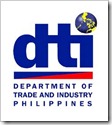 Department of Trade and Industry (www.dti.gov.ph)
Department of Trade and Industry (www.dti.gov.ph)
The Department of Trade and Industry is a government agency that helps small business to become productive and successful. They also provide seminars and learning centers for Filipinos who want to engage in business.
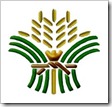 Department of Agriculture (www.da.gov.ph)
Department of Agriculture (www.da.gov.ph)
This is an agency that helps and assist our farmers in rice and crop production. They also promote the Comprehensive Agrarian Reform Program for farmers. The purpose of this program is to uplift the livelihood of our poor farmers, and to help them to own a piece of land for farming.
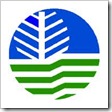 Department of National Resource (www.denr.gov.ph)
Department of National Resource (www.denr.gov.ph)
This department is responsible of taking care of our environment. They have programs for the preservation of our environment and natural resources. One example is tree planting that gained support all over our country. At present, DENR is pushing a program called “Zero Waste Management.” This program encourage public and private institution to dispose the garbage properly.
Tuesday, October 16, 2012
The Early Ancestors of the Philippines
Our race is a unique mixture of different cultures. We became Filipinos because we came from our ancestors. This article will provide you information about the early ancestors of our country. Many historians and archaeologists believed that our country is part of Asian mainland. There were long strips of land connected to Asia, and it was used by our ancestors to reach Philippines. However, these land bridges disappeared after Ice . Age which caused the lands to drift apart.
There were many theories of our origin. One is the Tabon Cave Man theory. It explained that the Tabon Cave Man was the first people who lived in our country. Their remains can were found in Palawan. But according to Dr. H. Otley Beyer, an American anthropologist, there were 3 kinds of people who came to Philippines. They were Negritos, Indos, and Malays.
Negritos
The Negritos were the first group of people who came to our country through land bridges. They were nomads because they had no permanent homes. They were small, about four feet tall, flat nose, thick lips, round black eyes, and dark skin. At present, they are known as Ita, Baluga, Agta. Most of them can still be seen living in caves and mountains.
Indones
These group of people arrived in the Philippines using boats. They were more civilized than Negritos. According to history, two groups of Indones came to Philippines. The first group were tall and slender, had brown skin, thin lips, high-bridged nose. Their tools were made of stones. The second group came from Indo-China and Southern China. They were short, had dark skin. They were better than the first group. Indones were hunters. They stayed in a house made of wood. They also used fire to cook food.
Malays
They were the third group of people who migrated to the Philippines. They came from Malay Peninsula in big boats called Balangay. There were three groups of Malay who settled in our country. The first group settled in Palawan and Mindoro. They were from West Borneo. They were well-built, medium height,brown complexion,straight black hair and flat noses. Their tools and weapons were made from Bronze. They were the ancestors of Tagalog, Ilocanos and Bicolanos. The second group of Malays were more civilized than the first group. They were also the ancestors of Tagalog and Visayans. They also used alphabet. The third group of Malays brought Islam in Philippines. Their system of society is more better than the two groups. They introduced the importance of governance by forming tribes and communities.
Monday, October 15, 2012
About the Philippines Natural Resources
 Our country is rich in various and unique forms of plants and animals that can be only found in the Philippines. Let me share the following information about the Philippines natural resources.
Our country is rich in various and unique forms of plants and animals that can be only found in the Philippines. Let me share the following information about the Philippines natural resources.
- Our seas produce different fish, sea products, shells, and pearls. We have the famous fishes that Filipinos can be proud of like bangus, talakitok, lapu-lapu,banak.
- The smallest freshwater fish in the world, Pandaca Pygmea (dwarf- pygmy goby) is found in Camarines Sur, Philippines. This smallest vertebrate may now be extinct due to the pollution of its habitat.
- The smallest and one of the biggest clams in the world, the pisidium and tridacna gigas, are found in Philippines seas.
- Conus Gloria Maris, a rare shell can only be found in the Philippines.
- We have rare animals and birds species like the world’s smallest primates, the tarsier which is found in Bohol; the tamaraw, an extraordinary animal that looks like a carabao in Mindoro; the mouse deer found in Balabac Islands, Palawan; the country’s most beautiful bird, the Paboreal; the Philippine Eagle, our national bird; Lawin, known as the smallest falcon; the Philippines biggest bird, the sharpe’s crane.
- The Philippines is also blessed with a lot of mineral resources such as steel, gold, asphalt, manganese, carbon, sulphur, oil, feldspar, phosphate, nickel, marble, limestone. Few years ago, oil was also discovered in Palawan.
- Types of bamboo can be seen in different parts of the Philippines. These bamboos were exported in other countries, and used for materials in the house, making furniture and many more.
- Our forests are abundant in trees like mahogany, molave, apitong, yakal, ipil, etc. Those trees are used for making furniture and house. The country’s narra tree is also popular for its strength and durability.
- The Philippine is famous for its rope known as Abaca. This rope is known worldwide for its strength and durability.
- The Philippines is widely known for the production of tropical fruits like pineapple, mango, and banana. We also export coconut in different countries.
- The Philippines has different varieties of palms. The coconut tree (cocos nucifera) is found in almost regions of the Philippines.
Different Forms of Lands in the Philippines (Mga Anyong Lupa sa Pilipinas)
Philippines is a beautiful country. Why? Because it has different land and water formations that shaped our country. In this article, I will list down the different land forms in the Philippines.
1. Volcano (Bulkan)
 A volcano is a mountain with a large hole at the top. There are active volcanoes and inactive volcanoes found in the Philippines. We have almost 200 volcanoes, but only 22 volcanoes are active. Mayon volcano is an example of an active volcano. It is located in Bicol province. It is one of the beautiful volcanoes because of its perfect cone. Another example is found in Talisay, Batangas. It is known as Taal Volcano. This is the smallest volcano in the world, and you will be amazed how beautiful it is.
A volcano is a mountain with a large hole at the top. There are active volcanoes and inactive volcanoes found in the Philippines. We have almost 200 volcanoes, but only 22 volcanoes are active. Mayon volcano is an example of an active volcano. It is located in Bicol province. It is one of the beautiful volcanoes because of its perfect cone. Another example is found in Talisay, Batangas. It is known as Taal Volcano. This is the smallest volcano in the world, and you will be amazed how beautiful it is.
2. Hill (Burol)
A hill is a high mass of land less than a mountain. It is still a part of a mountain, but it is in the lower part. This land form is used by farmers to graze their cows, goats, and carabaos because of its abundant grass and plants. Chocolate Hill is the famous hill in the Philippines found in Bohol.
3. Plain (Kapatagan)
A plain is a wide and flat land. Most developed cities in the Philippines are located in a plain land. It is also an ideal place for farming. The plain of Central Luzon is the largest plain in the country. It is also known as the rice granary of the Philippines.
4. Mountain (Bundok)
Philippines is rich in mountains. Mt. Apo is the highest mountain in the Philippines, and it is located in Davao, Mindanao. The second highest mountain is Mt. Dulang-Dulang found in Bukidnon. The third highest mountain is Mt. Pulag in Benguet. There are four mountain ranges in our country: Sierra Madre Mountains are the longest mountain range; Zambales mountain range;Cordillera mountain range;and Caraballo mountain range.
5. Plateau (Talampas)
A plateau is a wide plain on top of a hill or mountain. Many farmers lived here because it has a cool weather. It is also ideal for planting and growing vegetables and fruits. Tagaytay City and Baguio City are good examples of beautiful plateau in Philippines.
6. Valley (Lambak)
A valley is a plain land between the foot of the hills or mountains. Cagayan valley is the largest valley in the country. La Trinidad valley in Benguet is used for planting vegetables and fruits. You can find here different vegetables and fruits.
7. Cape (Tangos)
A cape is point of land running into the water. Some capes are used for docking sea vessels. Also, some constructions are built for good purposes. An example of a beautiful cape is in Pangasinan. It is called Cape Bolinao. A lighthouse was built there to guide sea travelers.
Sunday, October 14, 2012
Overview about the Philippines Geographic Location, Climate, and Resources
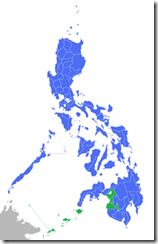 There were many theories how Philippines was formed. Many believed that our country came from the deepest part of the Pacific Ocean. Others believed that Philippines was the result of a very strong earthquake. However, most historians and geologists agreed that Philippines was once a part of the vast stretch of land of the mainland Asian continent. Our ancestors used these vast stretch of land or ‘land bridges’ to travel by foot to Philippines. But because of the movements of the earth, our country was separated to Mainland Asia.
There were many theories how Philippines was formed. Many believed that our country came from the deepest part of the Pacific Ocean. Others believed that Philippines was the result of a very strong earthquake. However, most historians and geologists agreed that Philippines was once a part of the vast stretch of land of the mainland Asian continent. Our ancestors used these vast stretch of land or ‘land bridges’ to travel by foot to Philippines. But because of the movements of the earth, our country was separated to Mainland Asia.
If you will check the map of Asia, you will see that Philippines is in Southeast Asia. We are surrounded by different countries like Indonesia in the south; Vietnam, Thailand, Laos, Cambodia in the west; Japan and Taiwan in the north; Guam and Micronesia in the east. Our country is also composed of big and small islands. It is estimated that there are 7,107 islands in the Philippines. Only few of these islands were given names, and almost 2,000 islands are inhabited by Filipinos.
Our country is also divided into three major islands. Luzon is the biggest followed by Mindanao, and Visayas is the smallest. Here are the ten biggest islands in Philippines:
1. Luzon
2. Mindanao
3. Palawan
4. Samar
5. Negros
6. Panay
7. Mindoro
8. Leyte
9. Cebu
10. Bohol
Our country is also blessed with different bodies of water. These forms of water adds beauty in our country. Many foreign visitors visits our country to enjoy the beautiful beaches, lakes, and rivers. One example is Boracay. This beach is one of the most visited places in the Philippines.
Here are the big forms of water surrounding the Philippines:
1. Luzon straight, Balintang Channel, and Bashi Channel in the North.
2. Pacific Ocean in the East
3. South China in the West
4. Mindanao Sea and Celebes Sea in the South
Just like in other Asian countries, the physical environment of our country was characterized as a tropical country. This was the physical environment that the early settlers were accustomed to for a long period of time. Even up to this time, tropical climate with heavy rains and hot temperature prevails in our country.
Philippines is also blessed with rich natural resources. According to studies, our early ancestors live a good and decent lives thousands of years ago. Their daily needs came from the rich natural resources of forests, seas, rivers, plains, etc. Our country is also known for its various and unique forms of plants and animals found in our forests. There are more than 8,000 species of flowers, and approximately 14,000 species of plants. Our country is fortunate to have been gifted with natural resources. I hope we will value it, treasure it, and take care of it for the next generation.

















